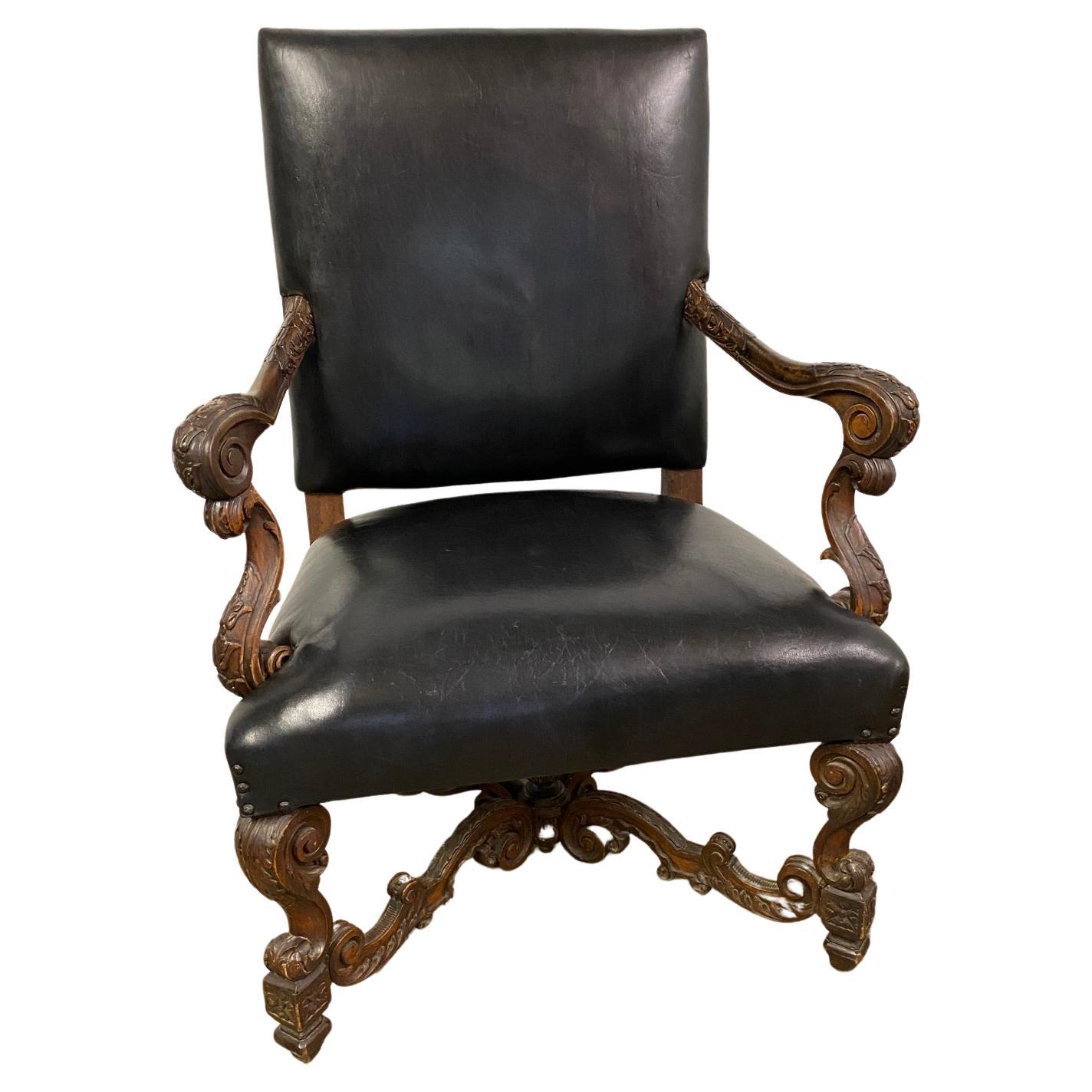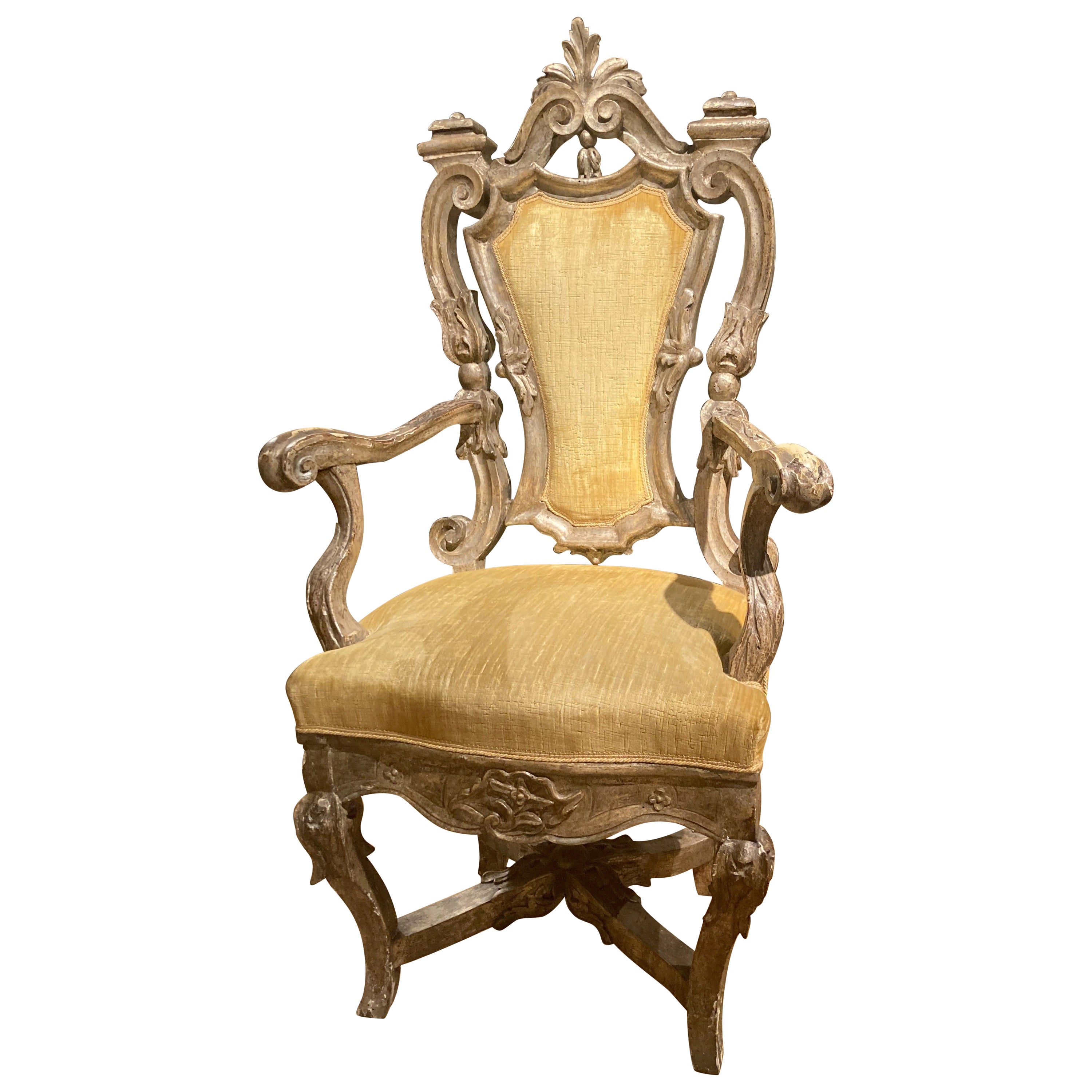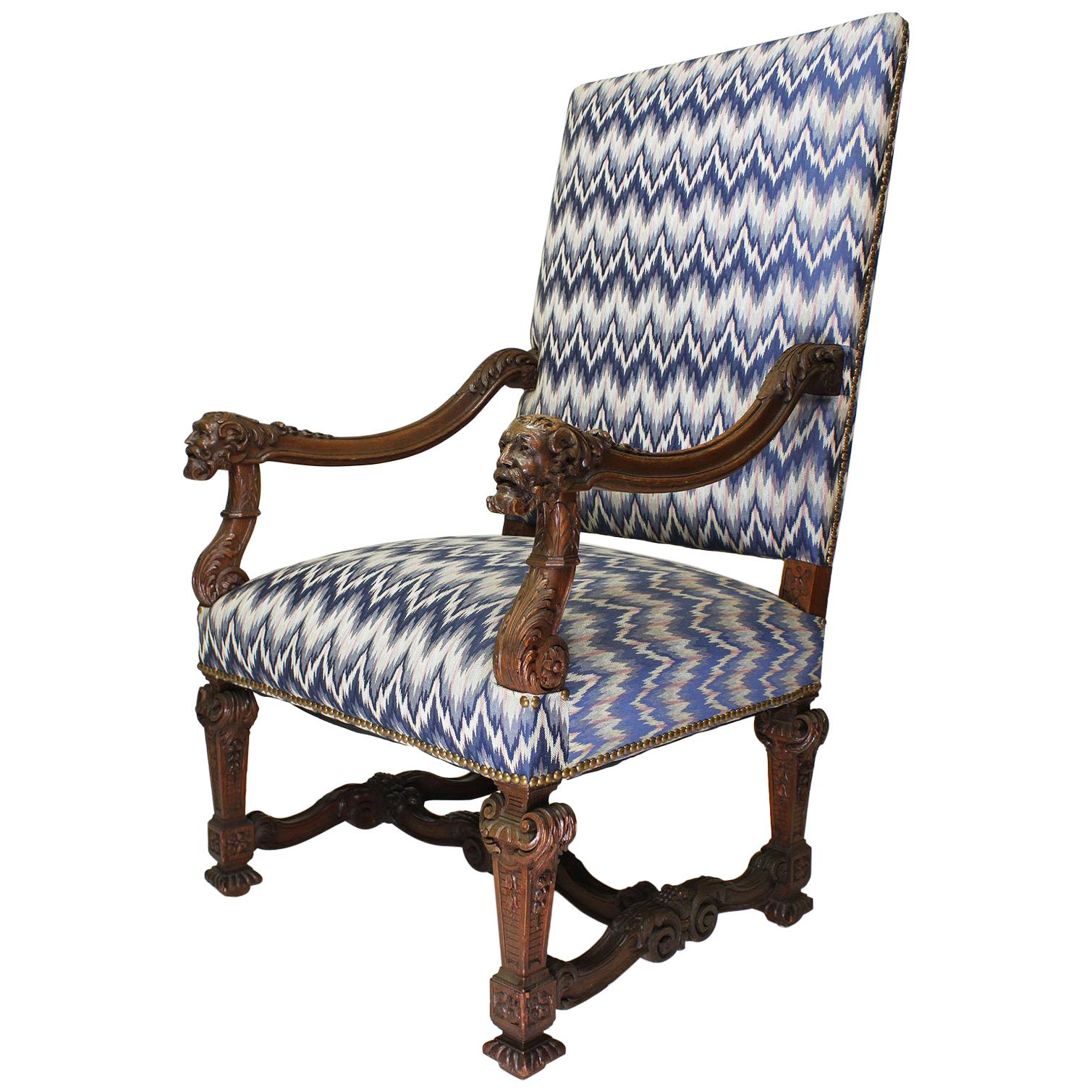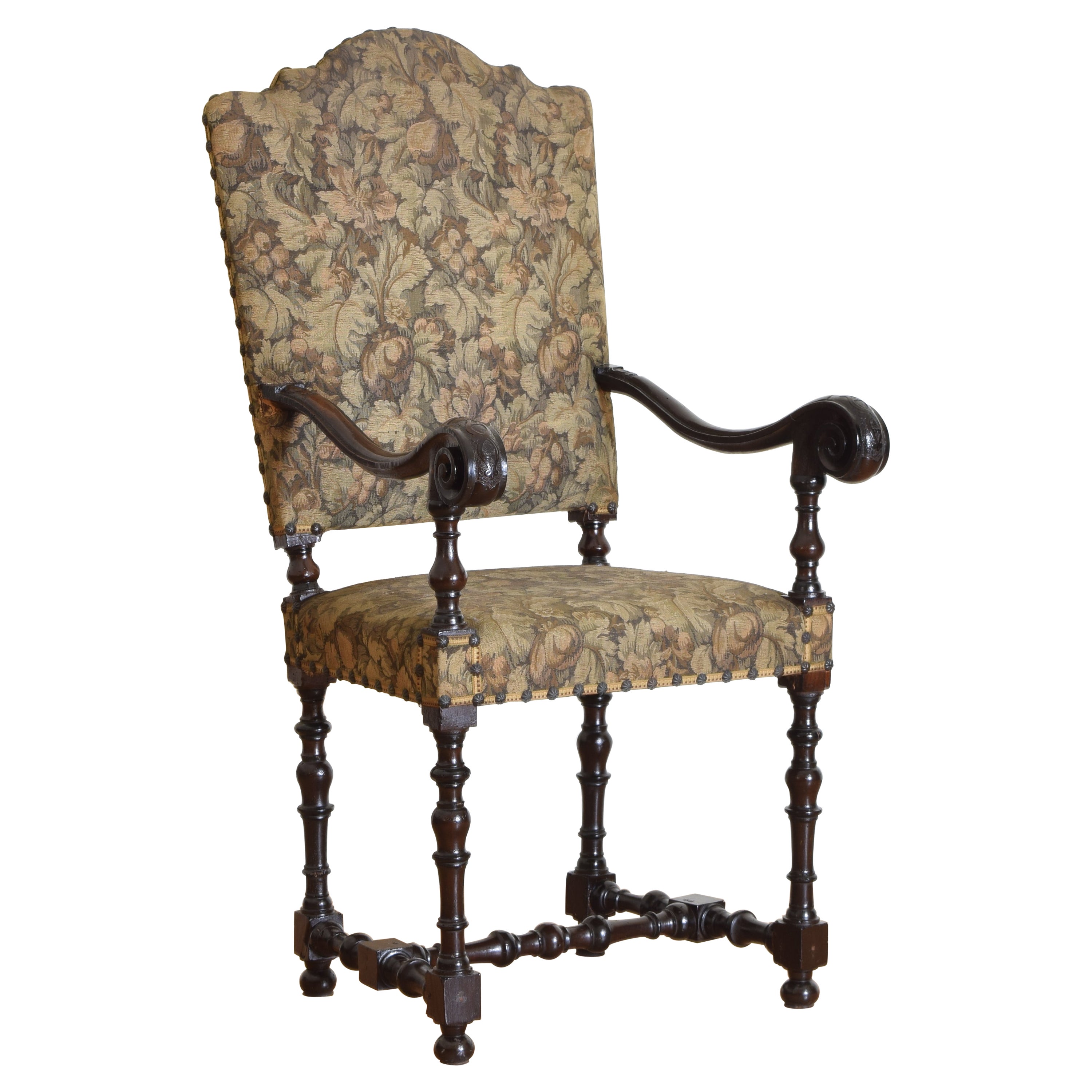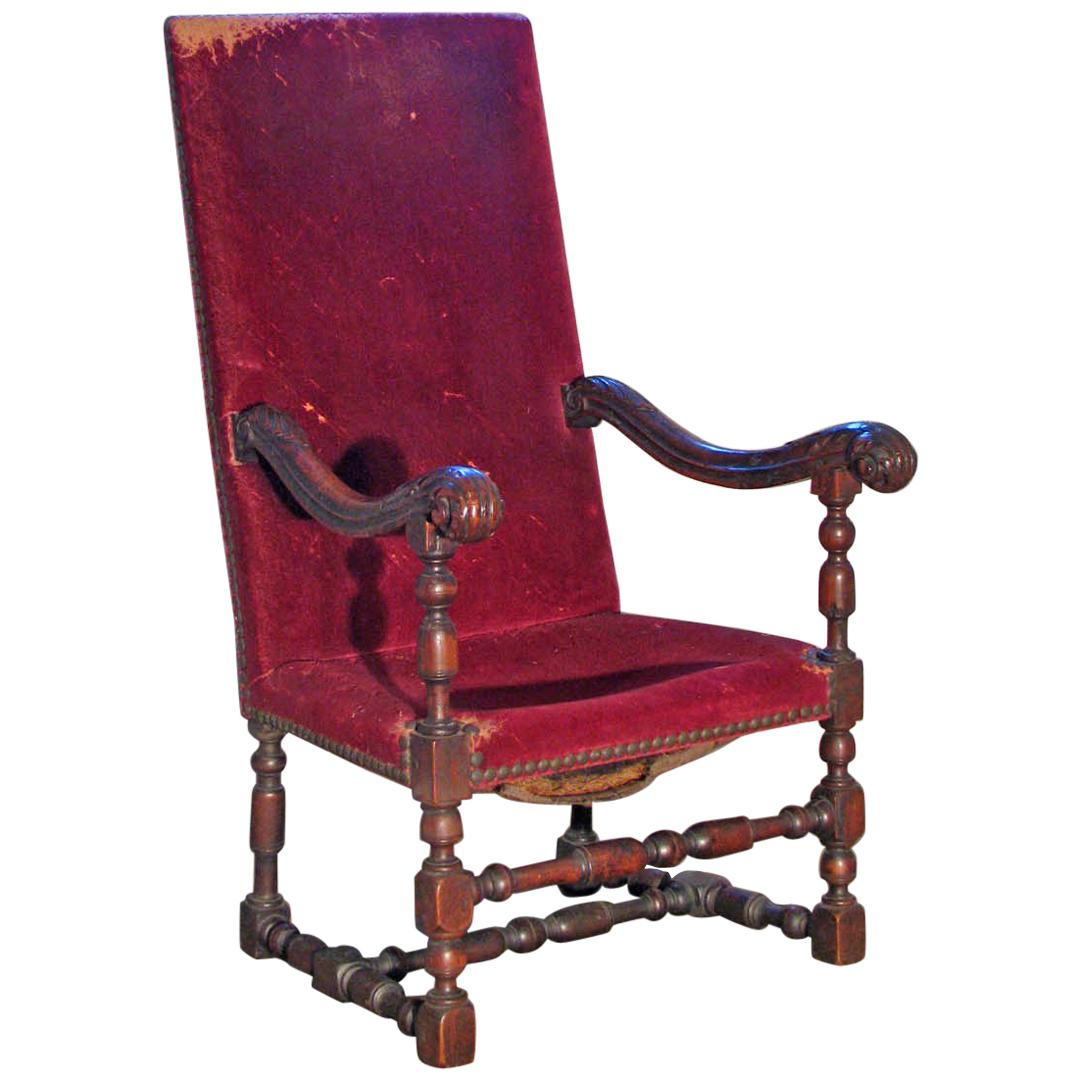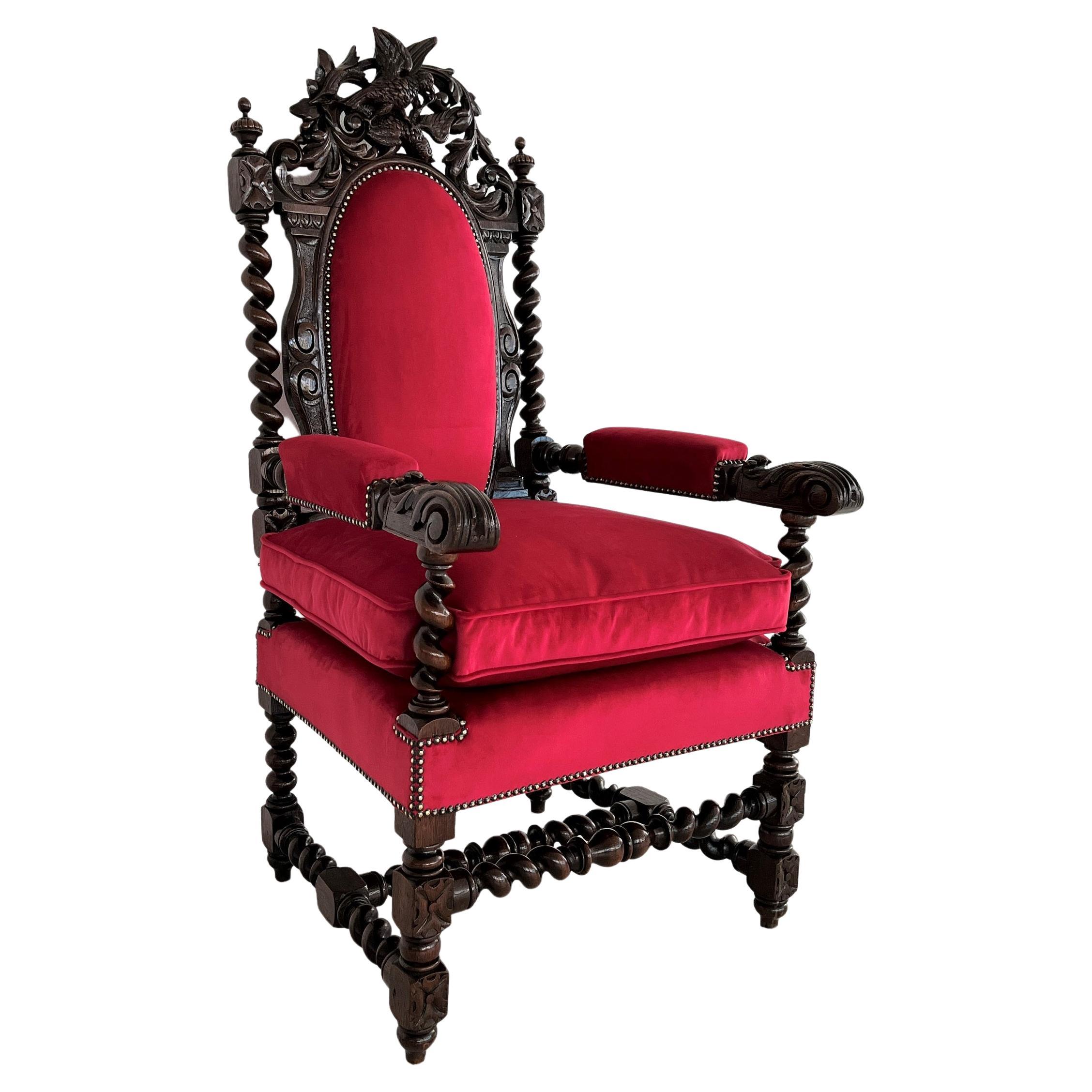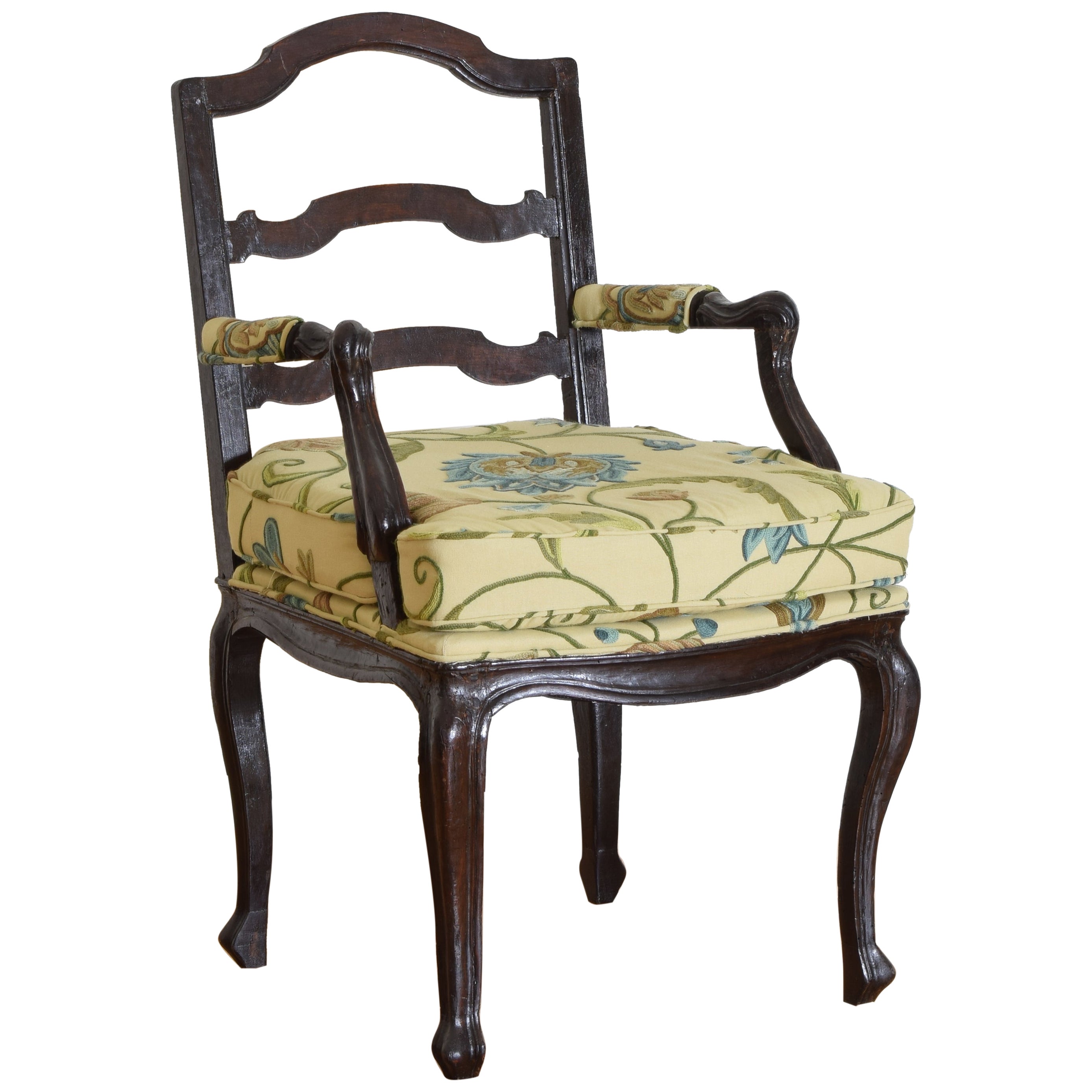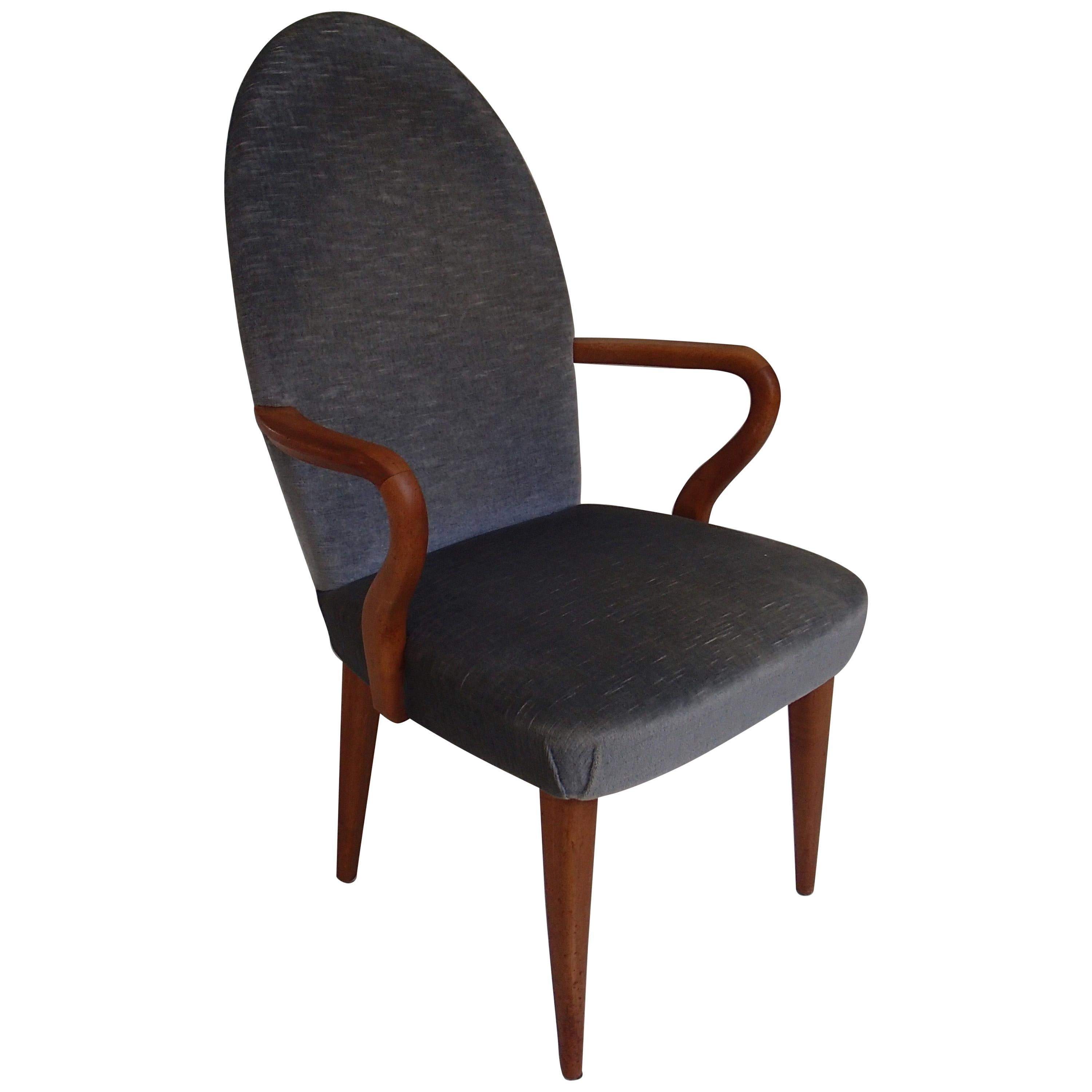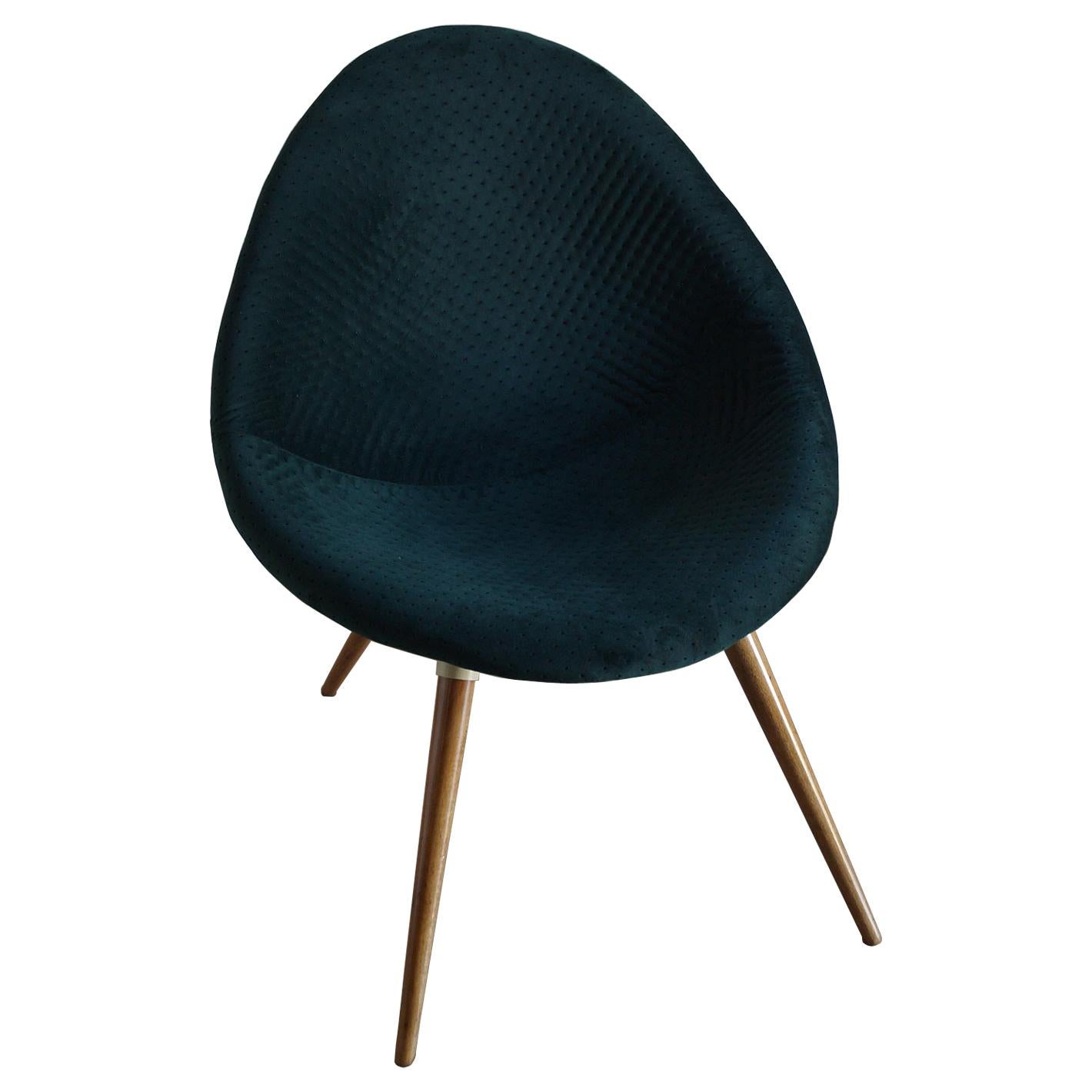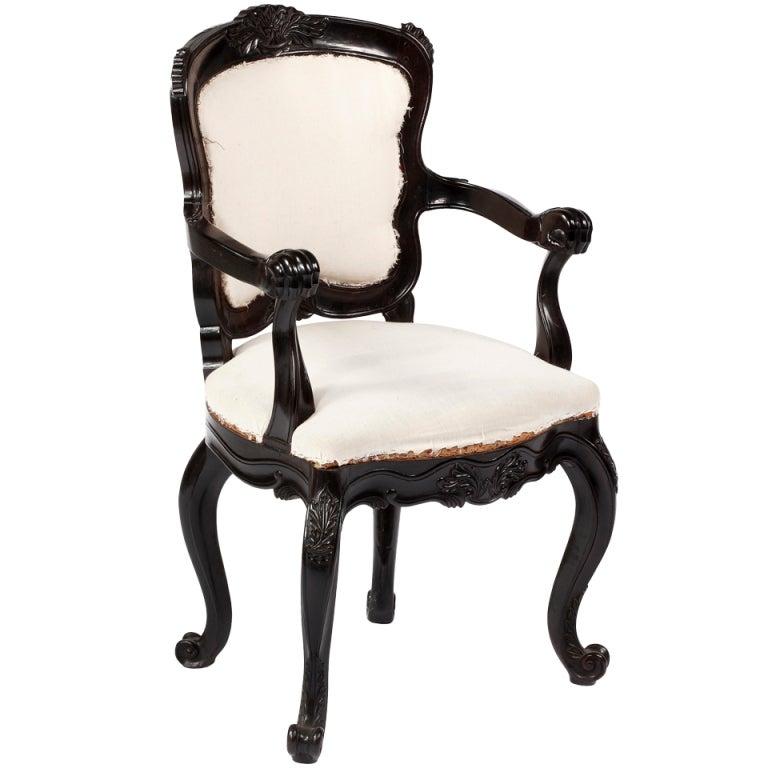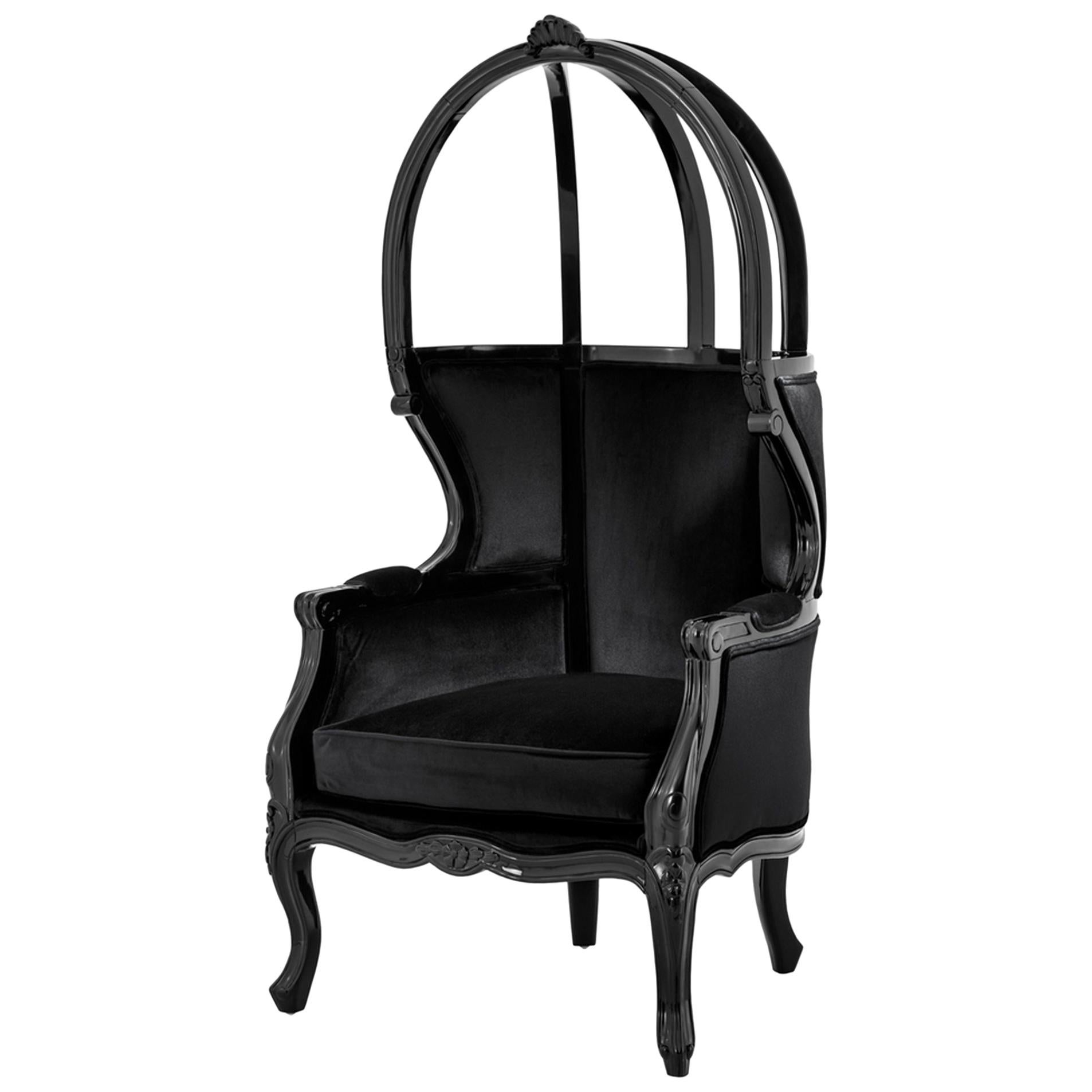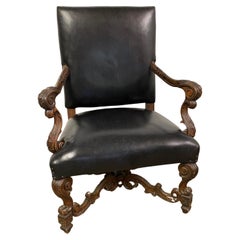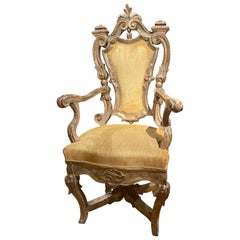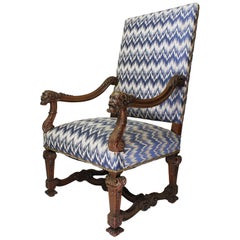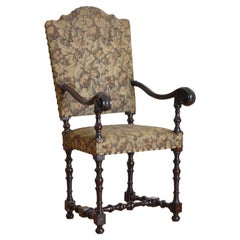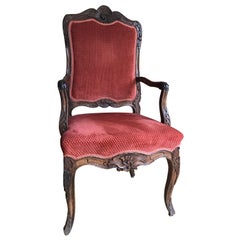
Sicilian Sculpted Armchair Baroque Rococo Italy Throne Shell Walnut Linen Velvet
View Similar Items
1 of 5
Sicilian Sculpted Armchair Baroque Rococo Italy Throne Shell Walnut Linen Velvet
About the Item
- Dimensions:Height: 47.25 in (120 cm)Width: 24.41 in (62 cm)Depth: 22.84 in (58 cm)Seat Height: 20.87 in (53 cm)
- Style:Baroque (Of the Period)
- Materials and Techniques:
- Place of Origin:
- Period:
- Date of Manufacture:1715
- Condition:Reupholstered. Repaired: Newly glued, newly upholstered, carvings cleaned and polished using silky shellaque.
- Seller Location:Ettlingen, DE
- Reference Number:1stDibs: LU5682224036142
Authenticity Guarantee
In the unlikely event there’s an issue with an item’s authenticity, contact us within 1 year for a full refund. DetailsMoney-Back Guarantee
If your item is not as described, is damaged in transit, or does not arrive, contact us within 7 days for a full refund. Details24-Hour Cancellation
You have a 24-hour grace period in which to reconsider your purchase, with no questions asked.Vetted Professional Sellers
Our world-class sellers must adhere to strict standards for service and quality, maintaining the integrity of our listings.Price-Match Guarantee
If you find that a seller listed the same item for a lower price elsewhere, we’ll match it.Trusted Global Delivery
Our best-in-class carrier network provides specialized shipping options worldwide, including custom delivery.You May Also Like
19th Century Italian Baroque Carved Walnut Throne Chair
Located in Sheffield, MA
A richly carved walnut Italian throne chair. This arm chair could make a wonderful statement in any room. Use it for a desk chair, next to a fireplace, an office or in the living roo...
Category
Antique 19th Century European Baroque Armchairs
Materials
Leather, Walnut
Italian Baroque Silver Mecca Giltwood Throne Armchair, Rome 17th Century
Located in Firenze, IT
This antique Italian Rococo 17th century throne armchair sourced in a palazzo in Rome, features swirls, curls and foliate motif richly hand carved...
Category
Antique 17th Century Italian Baroque Armchairs
Materials
Silver Leaf
Fine French 19th Century Louis XIV Style Baroque Carved Walnut Throne Armchair
Located in Los Angeles, CA
A fine French 19th century Louis XIV style Baroque Revival carved walnut throne armchair. The upholstered back and seat frame with open scrolled and carved armrests with carvings of ...
Category
Antique Late 19th Century French Baroque Revival Armchairs
Materials
Fabric, Walnut
Italian, Emiliana, Baroque Large Carved & Shaped Walnut Open Armchair, ca. 1680
Located in Atlanta, GA
from the Emilia Romagna region of Italy, having an arched and shaped slightly reclining backrest and fitted seat, with curving carved open arms, raised on tall turned legs joined by ...
Category
Antique 1680s Italian Baroque Armchairs
Materials
Walnut
Pair of Palatial Venetian Walnut Carved Mid-19th Century Baroque Figural Thrones
By Valentino Besarel
Located in Los Angeles, CA
A very fine pair of palatial Venetian walnut carved mid-19th century Baroque figural throne armchairs, attributed to Valentino Panciera Besarel (Venice, 1829-1902) in the manner of Andrea Brustolon (1662-1732). The ornately carved thrones, each flanked with figures of standing males supporting a branch-carved armrests with vines. Raised on cabriolet scrolled legs. Provenance: The Castello di Giove in Umbria, Italy, circa 1870-1880.
Height: 54 1/4 inches (137.8 cm.)
Width: 37 1/4 inches (94.6 cm.)
Depth: 32 inches (81.3 cm.)
Andrea Brustolon (20 July 1662 – 25 October 1732) was an Italian sculptor in wood. He is known for his furnishings in the Baroque style and devotional sculptures.
Biography
He was trained in a vigorous local tradition of sculpture in his native Belluno, in the Venetian terraferma, and in the studio of the Genoese sculptor Filippo Parodi, who was carrying out commissions at Padua and at Venice (1677). He spent the years 1678-80 at Rome, where the High Baroque sculpture of Bernini and his contemporaries polished his style. Apart from that, the first phase of Brustolon's working career was spent in Venice, 1680–1685. Brustolon is documented at several Venetian churches where he executed decorative carving in such profusion that he must have quickly assembled a large studio of assistants. As with his contemporary in London, Grinling Gibbons almost all the high quality robust Baroque carving in Venice has been attributed to Brustolon at one time or another. In the Venetian Ghetto, at the Scola Levantina, Brustolon provided the woodwork for the synagogue on the piano nobile, where the carved, canopied bimah is supported on Solomonic columns, which Brustolon had seen in Bernini's baldacchino in the Basilica of St Peter's.
His furniture included armchairs with figural sculptures that take the place of front legs and armrest supports, inspired by his experience of Bernini's Cathedra Petri. The gueridon, a tall stand for a candelabrum, offered Brustolon unhampered possibilities for variations of the idea of a caryatid or atlas: the familiar Baroque painted and ebonized figural gueridons, endlessly reproduced since the eighteenth century, found their models in Brustolon's work.
His secular commissions from Pietro Venier, of the Venier di San Vio family (a suite of forty sculptural pieces that can be seen in the Sala di Brustolon of the Ca' Rezzonico, Venice), from the Pisani of Strà, and from the Correr di San Simeone families encourage the attribution to him of some extravagantly rich undocumented moveable furniture. Andrea Brustolon's elaborate carved furniture aspired towards the condition of sculpture, such as the Dutch bases for console tables which look like enlargements of the work of the two Van Vianens, Paulus and Adam, perhaps the greatest Dutch silversmiths of the period. These carved pieces display the baroque tendency to develop a form three-dimensionally in space.
Brustolon's walnut, boxwood and ebony pieces transcend ordinary functional limitations of furniture; they are constructed of elaborately carved figures. The framework of Brustolon's chairs, side tables and gueridons were carved as gnarled tree branches, with further supports of putti and male figures carved in ebony. Backrests of the chairs, which were never touched in the rigidly upright posture that contemporary etiquette demanded, were carved with allegories of vanity, fire and music, etc.
The most extravagant piece delivered for Pietro Venier was a large side table and vase-stand of box and ebony, designed as a single ensemble to display rare imported Japanese porcelain vases. The eclectic allegories include Hercules with the Hydra and Cerberus, males and reclining river-gods (see ref.).
For the Correr, less extrovert chairs bear female nudes extended along the armrests. For the Pisani, he carved a suite of twelve chairs (now at the Palazzo Quirinale) with flowers, fruit, leaves and branches to symbolize the twelve months of the year. Work by Brustolon is at the Villa Pisani at Stra.
In 1685 Brustolon returned to the house where he was born at Belluno, and from that time devoted himself mainly to tabernacles and devotional sculptures in walnut, boxwood or ivory. His polychromed ivory Corpus from a crucifix is in the Museo Civico di Belluno, which preserves some of Brustolon's preparatory drawings for frames to be carved with putti displaying emblems. A pair of boxwood sculptures, The Sacrifice of Abraham and Jacob Wrestling with the Angel...
Category
Antique 19th Century Italian Baroque Armchairs
Materials
Leather, Walnut
$38,950 Sale Price / set
48% Off
French Baroque 17th Century Louis XIV Walnut Armchair
Located in Troy, NY
Of comfortable size, the four beautifully turned legs joined by conforming stretchers, scrolling, carved arms.
Clean up and polish included. The chair needs to be re-upholstered and...
Category
Antique Late 17th Century French Baroque Armchairs
Materials
Walnut
Recently Viewed
View AllMore Ways To Browse
Italian Rococo Desk
Artdeco Seats
Artifort F518
Arts And Craft Tub Chair
Baker Chinese Chairs
Bentwood Recliners Norway
Bloomsbury Armchair
Boling Chair
Bonnet Chairs
Borge Mogensen Footstool
Bow Wood Steiner
Brno Chairs Brass
Brustolon Chair
Carved Kings Chair
Cassina P22
Chamber Pot Chair
Chaplin Armchair
Charles Rohlfs Furniture
